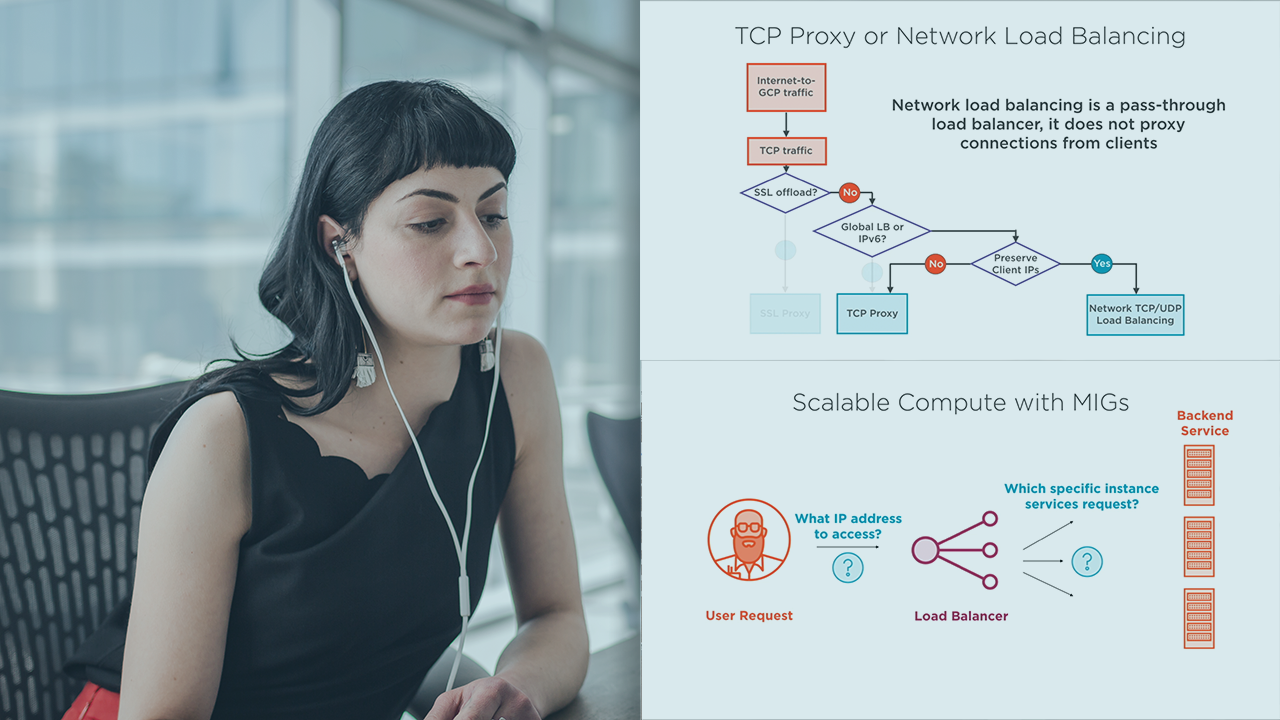- Course
Leveraging Load Balancing Options on the GCP
Developers and app architects need to understand what kind of load balancer to choose, and why. This course covers the essential load balancing options available on the GCP and demonstrates their use in combination with other GCP technologies.

- Course
Leveraging Load Balancing Options on the GCP
Developers and app architects need to understand what kind of load balancer to choose, and why. This course covers the essential load balancing options available on the GCP and demonstrates their use in combination with other GCP technologies.
Get started today
Access this course and other top-rated tech content with one of our business plans.
Try this course for free
Access this course and other top-rated tech content with one of our individual plans.
This course is included in the libraries shown below:
- Cloud
What you'll learn
Load balancers used to be somewhat arcane tools that only some network planners or architects really had to worry about during edge-case planning; now they are absolutely mainstream. This is because, in the on-cloud world, backend compute instances and IP addresses both change frequently and unpredictably. Load balancers provide the stable front-end that end users of an application can reliably connect to, and have their requests routed to the appropriate backend instance. In this course, Leveraging Load Balancing Options on the GCP, you'll explore and work with the different kinds of load balancing options available on the Google Cloud and know the right one to pick for your specific use case. First, you’ll start off by understanding the different load balancing options on the GCP, the OSI layer at which they operate, and understand the differences between global and regional load balancing and external and internal load balancing. Next, you’ll be introduced to the various components that make up the global HTTP load balancer such as backend services, forwarding rules, and URL maps. Then, you'll get hands-on and create and configure two HTTP load balancers to demonstrate the use of both unmanaged and managed instance groups on the backend. Finally, you'll explore all of the other global as well as regional load balancers on the GCP, such as the TCP proxy and SSL proxy load balancing, network load balancing. When you’re done with this course, you'll possess a comprehensive conceptual and hands-on understanding of the various load balancing options on the GCP and you'll be able to pick the right one for your use case.

